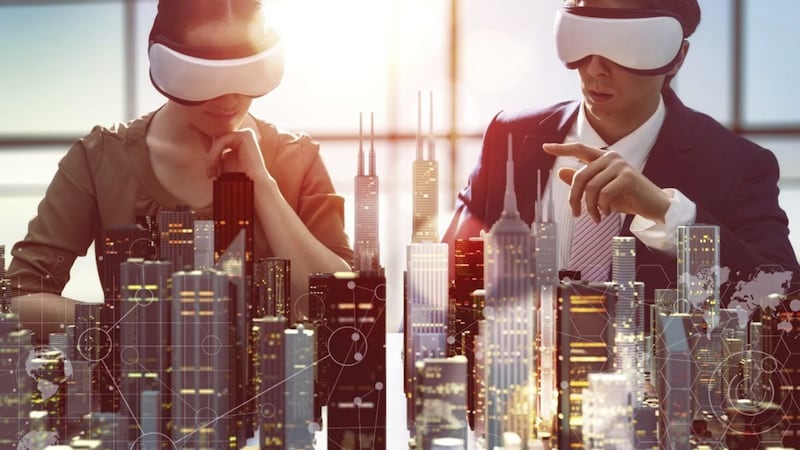THE pioneering work of computer scientist Jaron Lanier helped introduced the term ‘virtual reality’ to the world in 1987. Research into this technology continued into the 90s, and with the release of a number of sci-fi films at the time, virtual reality raised its profile.
Interest in the technology grew to such an extent that expectations were over-hyped. This then led to dissatisfaction, and in turn a lack of interest, resulting in a scaling back of funding for research into its development.
The concept of virtual reality, though damaged, did not disappear. Instead it reinvented itself into virtual environments. This re-invention morphed into something which fits our vision and expectations, of what this technology can do, and it now lives in a world of science facts in the real world as opposed to science fiction in a fantasy world.
But in regards to our everyday language, the familiar term of virtual reality is still widely used, and yet many people are unsure of its uses in terms of technology, science and business. Gaming is an obvious VR application, as are virtual worlds, but there are many other uses for virtual reality – some of which are adding to our quality of life and others to the efficiency of our businesses.
Healthcare is one of the main adapters of virtual reality which encompasses surgery simulation, phobia treatment, robotic surgery and skills training. One of the advantages of this technology is that it allows healthcare professionals to learn new skills, as well as refreshing existing ones, in a safe environment, all without causing any danger to patients. Think of it similar to when we see airline pilots, flying jumbo jets with 600 passengers on board in flight simulators, only this time it’s a heart surgeon perfecting a new procedure, minus a patient!
Of course the surgeon needs to know and feel the likes of pressure when operating. This is achieved by what is called ‘force feedback’, a term used in motor racing PC games accompanied by steering wheels (force feedback steering wheels). However, there is a serious concern regarding time delay or latency here. Even a fraction of a second delay can feel abnormal to the surgeon. So the force feedback in place needs to be precise to prevent this.
One example of this is the ‘HumanSim’ system which enables doctors, nurses and other medical personnel to engage with others in an interactive environment. Here they take part in training courses, interacting with other medical staff, in a 3D environment.
Within engineering, virtual reality includes the use of 3D modelling tools and visualisation techniques, as part of the design process. This technology enables engineers to view their project in 3D, and gain a greater understanding of how it works. They can spot any flaws or potential risks before implementation. This also allows the design team to observe their project within a safe environment, and make changes where necessary, saving both time and money.
Car manufacturers use virtual reality for prototyping purposes during the design process. This enables them to produce several versions, which are then tested and changed as per the results. It removes the need to build a physical prototype, and speeds up the development stage. The result is a cost effective and streamlined process to bring a new design to market.
Then there is the business world, which even though it’s getting easier and less expensive to fly around the world these days, virtual reality is playing its part. There are companies who use virtual worlds as a means of holding meetings, with people who are based in various locations. This is often a low cost solution to the problem of communication, with employees in remote locations, or locations were flight times are poor, and un-sympathetic to the business traveller.
This article only scratches the service of the uses of virtual reality in a few working environments. However, it should offer an insight and a starting point for our minds to explore our own place of work, and how we might benefit from the future developments of virtual reality.








